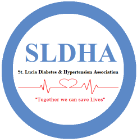Nerve damage, also known as diabetic neuropathy, can be a common complication for individuals with diabetes, especially when blood sugar levels are poorly controlled over time. Nerve damage in the feet (often referred to as diabetic foot neuropathy) can lead to various signs and symptoms, some of which might not be immediately noticeable because of reduced sensation in the feet. However, it's crucial to watch for these signs to prevent further complications. Here are some common signs of nerve damage or problems in the diabetic foot:
1. Numbness or Loss of Sensation:
- One of the earliest and most common signs of nerve damage is a feeling of numbness or tingling in the feet or toes. This occurs because the nerves are not transmitting signals properly.
- You may also have difficulty feeling heat, cold, or pain, making it easier for injuries to go unnoticed.
2. Tingling or "Pins and Needles" Sensation:
- Many people with diabetic neuropathy experience a sensation of tingling or "pins and needles" in their feet, which can sometimes feel uncomfortable or irritating.
3. Burning or Shooting Pain:
- Nerve damage can cause intense burning, sharp, or shooting pains in the feet, especially at night. This pain can vary in intensity and can be triggered by something as light as touch or a change in temperature.
4. Muscle Weakness or Atrophy:
- Nerve damage can affect the muscles of the feet and legs, causing muscle weakness or even muscle wasting (atrophy). This can result in difficulty walking or maintaining balance, and may lead to a "shuffling" gait.
5. Loss of Balance or Coordination:
- Nerve damage in the feet may affect your ability to feel the ground properly, making it harder to maintain balance. This increases the risk of falls or stumbling.
6. Foot Deformities or Changes in Shape:
- Nerve damage can lead to foot deformities like Charcot foot, which causes the bones and joints in the foot to weaken and collapse. This can cause changes in the shape of the foot, such as bony bumps or rocker-bottom feet.
7. Dry, Cracked Skin:
- Due to nerve damage, the foot's ability to sweat may be reduced, leading to dry, cracked skin on the feet, especially on the soles. Cracks in the skin can increase the risk of infections.
8. Loss of Hair on Feet or Legs:
- Reduced circulation and nerve function can result in a loss of hair on the feet and lower legs. Skin may also appear shinier or more pale.
9. Blisters, Sores, or Ulcers:
- Nerve damage can prevent you from feeling pain or discomfort from blisters, sores, or ulcers, allowing them to develop unnoticed. If left untreated, these can become infected and lead to more serious complications.
10. Changes in Foot Temperature:
- You may notice that your feet feel unusually cold or hot due to nerve dysfunction. This can make it hard to assess whether your feet are too warm or too cold, leading to an increased risk of burns or frostbite.
11. Increased Sensitivity to Touch:
- While some people with diabetic neuropathy experience numbness, others may develop hypersensitivity in the feet, meaning even light touch or contact with shoes or socks can feel painful.
12. Swelling or Inflammation:
- Damage to the nerves can affect the regulation of blood flow in the feet, leading to swelling or inflammation in the feet and ankles.
What to Do if You Notice These Symptoms:
If you experience any of these signs, it's important to see a healthcare provider as soon as possible. Early detection of nerve damage can help prevent further complications. Managing blood sugar levels effectively is crucial in slowing or preventing further nerve damage, along with regular foot inspections, wearing protective footwear, and avoiding injuries.
Regular check-ups with a healthcare provider for foot exams are key for diabetics to monitor any potential issues and prevent complications like infections or ulcers from developing.
